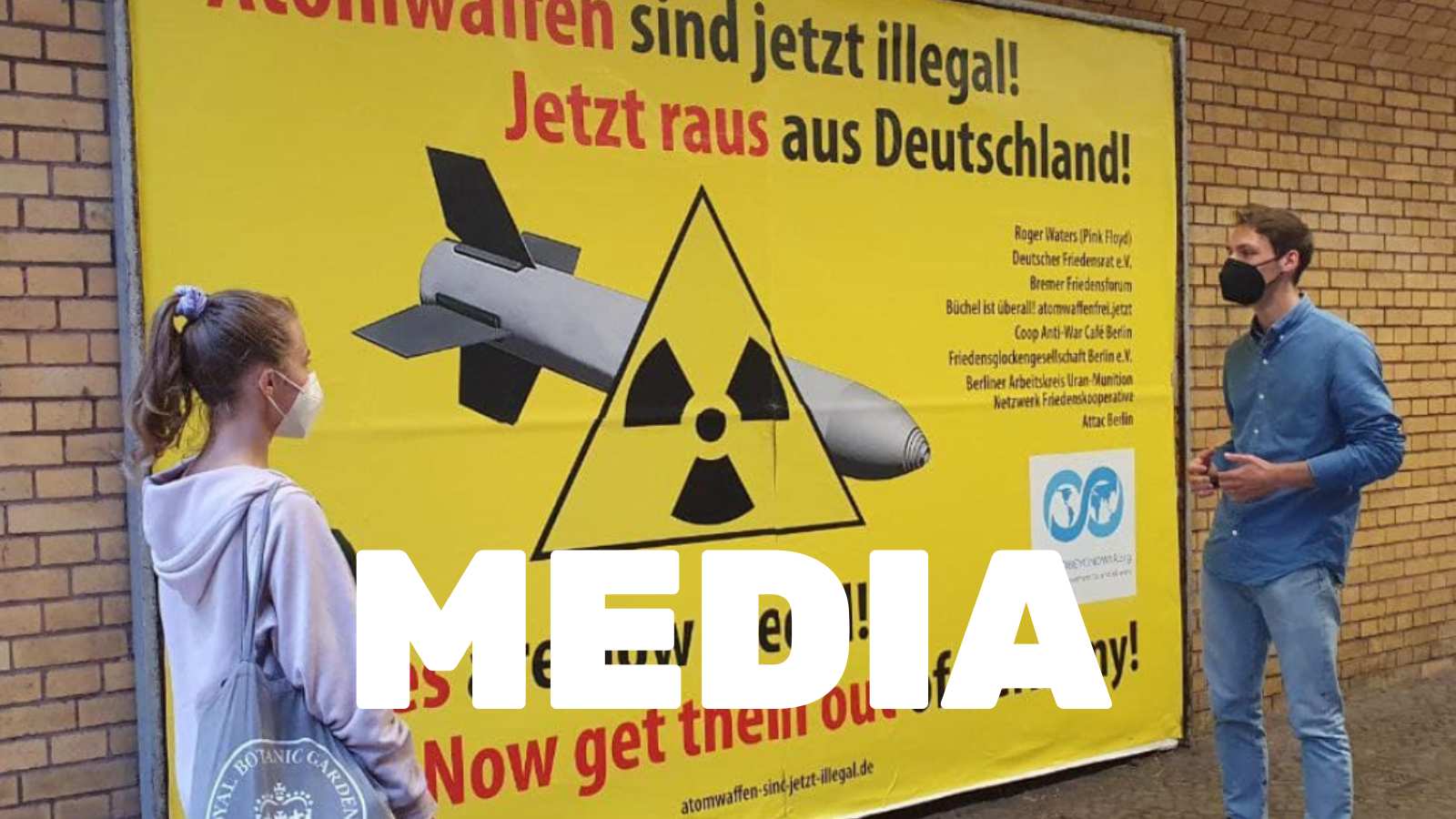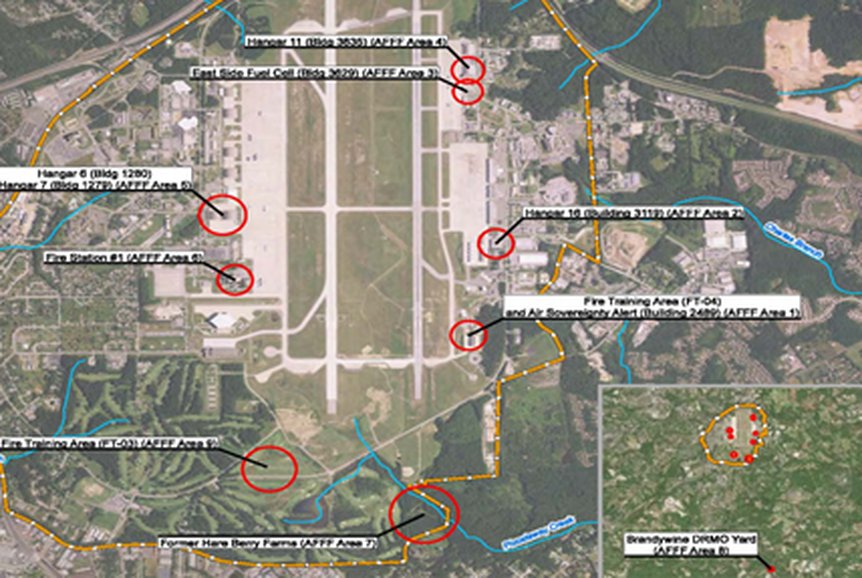
By Pat Elder, October 23, 2020
From Military Poisons
The Air Force has contaminated the groundwater at Joint Base Andrews with 39,700 parts per trillion of PFAS chemicals according to a report released by the Air Force in May, 2018. This is not exactly “Breaking News” although few know about it.
The base pollutes the Patuxent and Potomac rivers. Groundwater from numerous sites on base where PFAS-laden foams were used move east toward the Patuxent as well as west toward the Potomac. Meanwhile, surface water from the base travels to Piscataway Creek, Cabin Branch Creek, Henson Creek, and Meetinghouse Branch, emptying waters to both rivers. Andrews, the “Home of Air Force 1” is the only base in the state known to poison both the Patuxent and the Potomac.
PFAS may travel for miles. It contaminates fish and sickens people who consume it.
Who knew?
Google PFAS Joint Base Andrews. You won’t find a news story on PFAS contamination at Andrews, even though the results were “published” in May of 2018. That’s because the Air Force doesn’t send out press releases about these things and the Washington Post and local press generally don’t cover it. This kind of investigative reporting is simple enough, although many news outlets don’t have the capacity or desire to pursue stories like this. Consequently, few are aware of the threat posed to public health caused by the Air Force’s reckless use of these carcinogens.
Start here to begin looking into contamination caused by the Air Force at bases across the country.
The Air Force publishes engineer’s reports that document PFAS contamination across the country, although direct links to those publications rarely exist. It means your hometown paper is unlikely to run a story describing the military’s contamination of the local environment, particularly surface waters. It would require a degree of sleuthing, a lost art.

Thousands of creeks and rivers across the country carry high levels of the toxins, a particularly dangerous situation considering the bioaccumulative nature of many of these chemicals and their propensity to accumulate in fish at thousands of times the levels in water. Eating seafood from contaminated waters is the primary pathway through which PFAS enters our bodies. Contaminated drinking water is a distant second, although this is an inconvenient truth for the EPA, the DOD, Congress, and the state of Maryland.
Click through the report above and look at the Table of Contents. Search for terms like groundwater, surface water, burn pit, etc. Keep in mind that the nation’s top public health officials say consuming 1 part per trillion of these carcinogens is potentially dangerous while some fish caught near military baes contain millions of parts per trillion What’s in the perch and the rockfish and the oysters and the crabs? No one knows in Maryland.
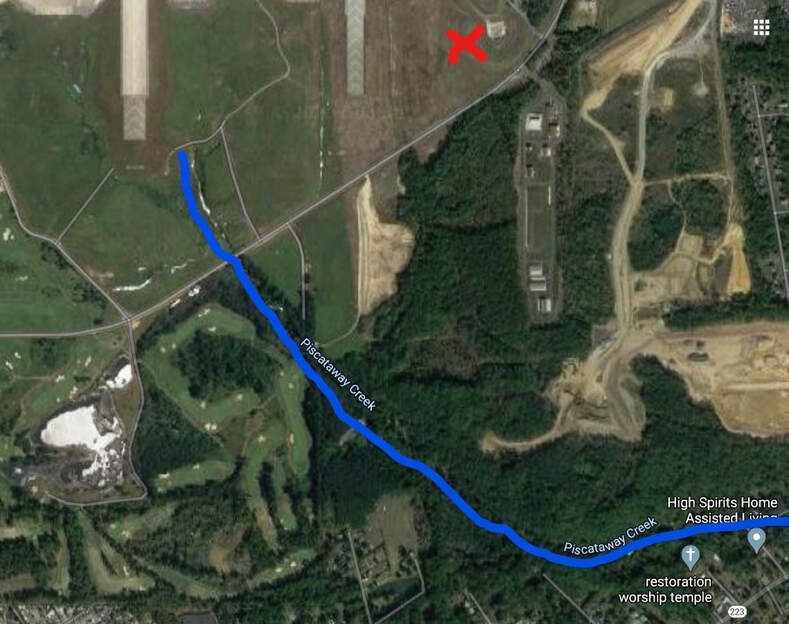
Back in 1970, the U.S. Air Force began using aqueous film forming foam (AFFF), containing PFOS and PFOA, to extinguish petroleum fires. AFFF entered the environment during routine fire training, equipment maintenance, storage, and frequent accidents. Air Force hangars are outfitted with overhead suppression systems laced with PFAS and they have been regularly tested since the 1970’s. Some of these systems are capable of covering a 2-acre hangar with 17 feet of foam within 2 minutes.
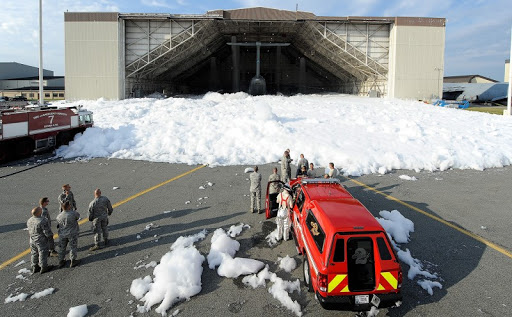
Here’s a brief glimpse of the history of the use of PFAS at Andrews taken from the report:
“The former Hare Berry Farm is on the south side of JBA, adjacent to the security fence and within the installation boundary. The farm was used to grow strawberry, raspberry, and blackberry crops. In May 1992 during aircraft fire suppression system testing, approximately 500 gallons of AFFF were released into Piscataway Creek, a source of irrigation water for the crops on the farm. Following the release, the property owner requested that the USAF evaluate whether the crops were safe for human consumption. The USAF tested the crops in August 1992 and determined they were fit for consumption in accordance with Food and Drug Administration (FDA) standards. In 1993, an assessment was prepared to evaluate risk associated with the potential effects of contaminants from compounds such as AFFF, deicing fluids, petroleum residues, solvents, and pesticides that enter Piscataway Creek with JBA stormwater runoff. The 1993 assessment concluded that Piscataway Creek did not pose a threat to human health or the environment.”
Don’t worry be happy?
Or should the state and/or private NGO’s step up to begin testing surface waters near military installations like this?
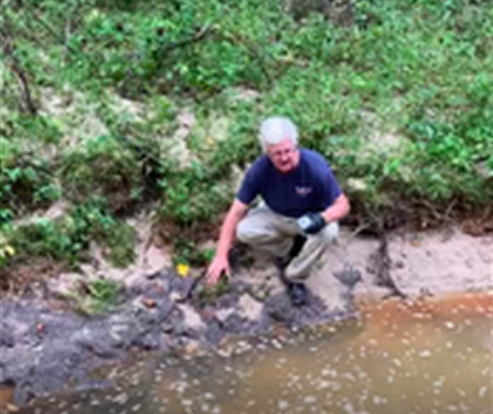
The Maryland Department of the Environment has not been helpful. Other states, like Michigan, have posted do not eat advisories for poisoned deer that live near Wurtsmuth Air Force Base – a base that closed 30 years ago! Fish advisories are posted miles away from the shuttered facility while the state has sued the military for damages arising from the use of PFAS on base. Not so in Maryland, where the state prefers not to tangle with the Pentagon over such matters.
PFAS are extraordinarily toxic chemicals. Aside from their bioaccumulative nature, they never break down, hence the label: “forever chemicals.” They’re linked to a host of cancers, fetal abnormalities, and multiple childhood illnesses. The EPA is no longer functioning as a regulatory agency under the Trump administration and the state is asleep at the switch, leaving public health in jeopardy.
The Burn Pits
Fire training areas (FTA’s) consisted of a 200-300-foot diameter burn pit. During fire training activities, the burn pit was saturated with water before an estimated 1,000 to 2,000 gallons of flammable liquids were added to the burn pit and ignited. They used oil and mixed it with jet fuel. Thousands of gallons of foam solution may be applied during a given event.
The fire training area shown above at the southeast corner of the runway was used for fire training activities from 1973 to 1990. Weekly exercises were conducted consisting of igniting combustible liquids in the burn pit and extinguishing the resulting fire with AFFF. Huge mushroom clouds of toxic chemical smoke and dust would form. The Air Force didn’t bother to track the quantity of AFFF used during these exercises.
Excess fluids generated during the exercises flowed across the burn area. Residual foam and water passed into the gravel bottom leaching pond. Liquids typically seeped through the gravel into the ground, but the leaching pond often became plugged, causing the pond to overflow onto the ground surface in the area.
The pit was also used for the time and distance testing for fire trucks using AFFF. Historically, testing is conducted several times a year to test the fire truck settings to ensure proper equipment operation, especially at a distance.
The Air Force made a mess of things in Prince George’s County, Maryland, using the carcinogenic foams at multiple locations at JB Andrews:
- Several Fire Training areas
- Hangars 16, 11, 6, 7
- Fire Station Building 3629
- Former Hale Berry Farm
In the absence of a firm commitment by the Maryland Department of the Environment to regulate PFAS in the state, the General Assembly must take action to force the Hogan-Grumbles team to safeguard the health of the public.





